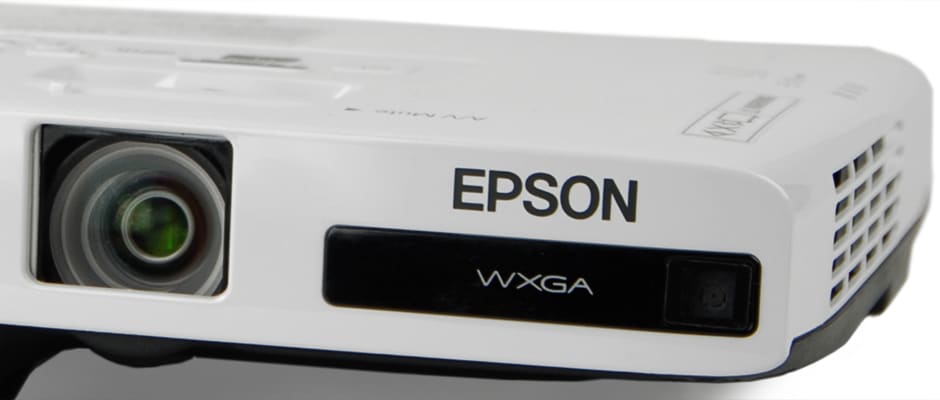Pros
Cons
Introduction
Front
{{section_header}}{{section.name}}{{/section_header}}
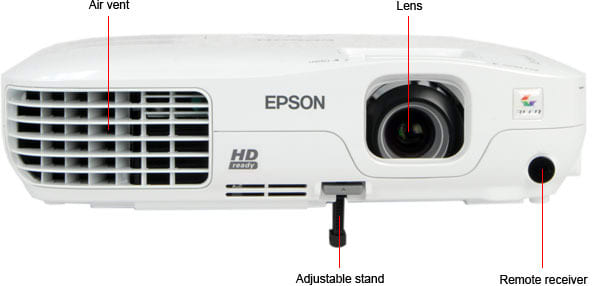
Back
{{section_header}}{{section.name}}{{/section_header}}
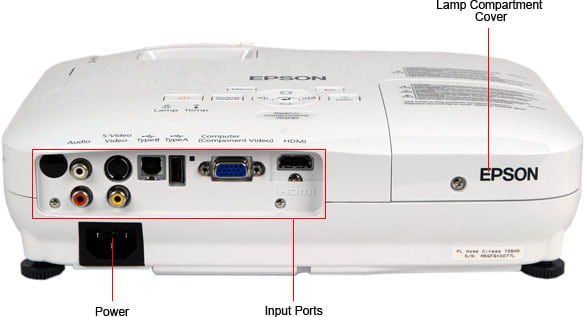
Sides
{{section_header}}{{section.name}}{{/section_header}}
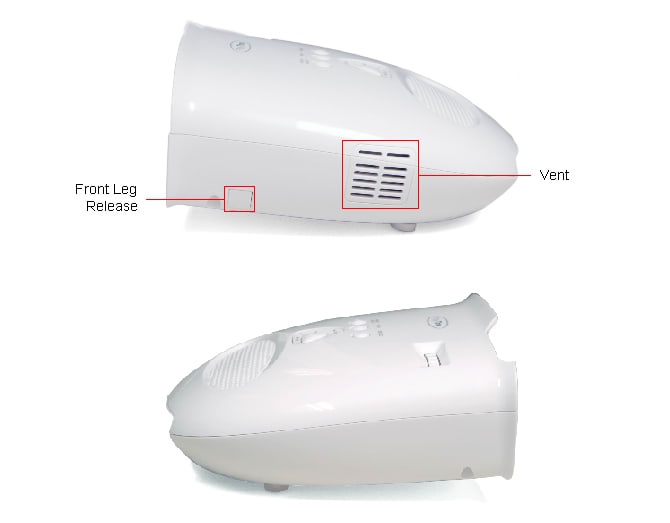
Top/Bottom
{{section_header}}{{section.name}}{{/section_header}}
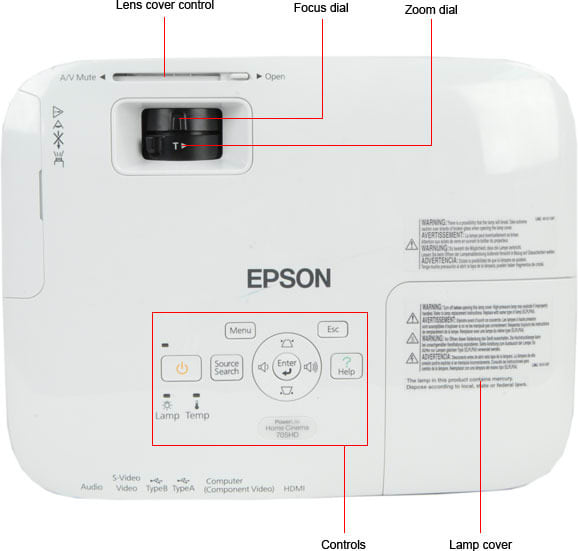
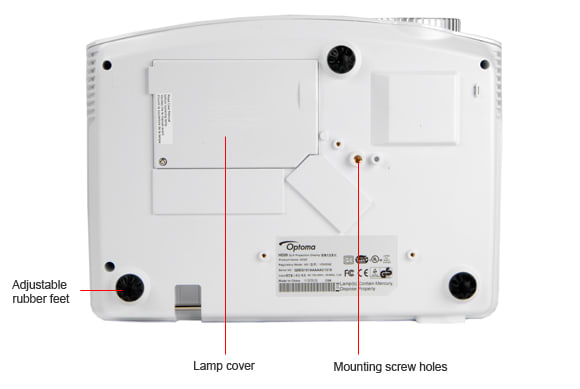
Stand/Mount
{{section_header}}{{section.name}}{{/section_header}}
The {{product.name}} has an adjustable foot located on the front and center of the projector. It extends out nearly two inches, giving you a huge range of movement when doing your set-up. The two back legs also adjust a little, as well, but they have the be screwed in and out, so they're not as convenient as the quick-release foot.
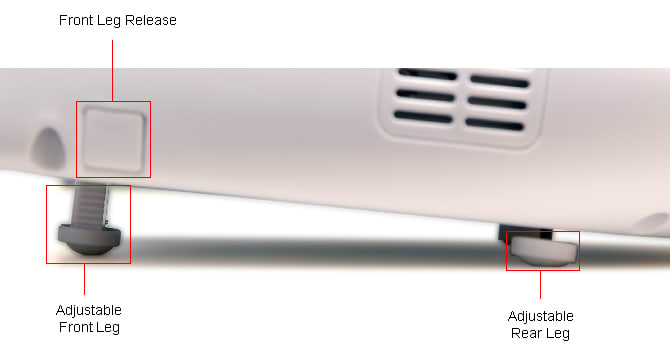
Lamp
Remote Control Tour
{{section_header}}{{section.name}}{{/section_header}}
The {{product.name}}'s remote control is compact and feels great in the hand. The button layout could have stood some improvement. As it is, there's little rhyme or reason to how the buttons are arranged. We can just see a teacher or nervous junior executive squinting at the remote, sweaty and agitated, while their audience murmurs in disapproval.
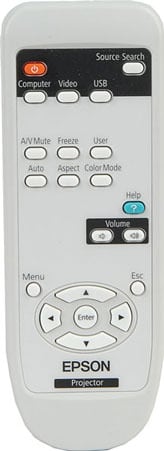
The small remote control of the 705HD
In the Box
{{section_header}}{{section.name}}{{/section_header}}
The {{product.name}} ships with the remote control & batteries, a power cable, a VGA cable, a USB cable, a "Quick Connect USB Key" (details), a cheap, thin carrying case, and some CD-ROMs and assorted documentation. All in all, it's a good little package to get you started. For home theater connections, you're probably going to want to pick up an HDMI cable. The carrying case is a nice thought, but buy something padded if you plan on hauling this around with any frequency.
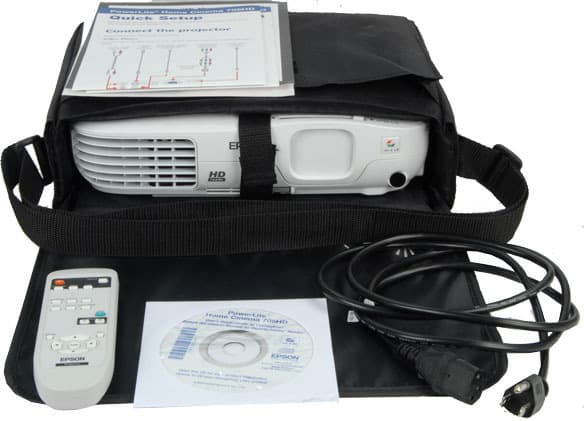
The 705HD comes with a carrying case, manuals, power cable and remote
Portability
{{section_header}}{{section.name}}{{/section_header}}
The {{product.name}} is a highly portable video projector that can do 720p video. That makes it a perfect choice for carting around to events that need high quality video for a large audience. The set-up is easy, especially with the the auto-focus and auto-keystone. The latter was far from perfect, but close enough that it will probably satisfy people that don't review projectors for a living.
{{product.raw_scores['Portability']}}
Peak Brightness
{{section_header}}{{section.name}}{{/section_header}}
Like all projectors, the {{product.name}} has a number of display modes. Some modes maximize brightness while sacrificing color performance, while others do the reverse. If you can find a dark room, you should always aim for maximizing color performance. Boardrooms and sunny classrooms require a different approach. We chose four different modes to test. You can see the results below. There's a huge difference between the color-friendly Theater mode and the color-sacrificing Dynamic mode.
Peak Brightness
Peak Brightness Comparison
{{image_chart title="Peak Brightness", attachment="Peak Brightness Comparison Graph"}}
Tunnel Contrast
{{section_header}}{{section.name}}{{/section_header}}
Many projectors and some TVs (plasmas, typically) have a hard time maintaining a consistent black level. If there's a lot of black area on the screen, the black levels are deep. If there's only a little black surrounded by a lot of bright white, the black level gets brighter. The {{product.name}} very clearly had a hard time here.
Tunnel Contrast
Uniformity
{{section_header}}{{section.name}}{{/section_header}}
The uniformity of the brightness is going to vary depending on the projector's angle and distance to the screen, but suffice it to say that no projector is perfectly uniform. Here's a graph showing the luminance variations in our particular set-up. The corners fell off pretty steeply, but the side-to-side uniformity was good.
Uniformity
Greyscale Gamma
{{section_header}}{{section.name}}{{/section_header}}
The greyscale gamma indicates how well a projector transitions from black to white. The {{product.name}}'s performance is good, but not great. Look at the chart below. We're looking for a smooth line that transitions from lower left to upper right. The {{product.name}}'s response curve shows no bumps or hiccups, so we don't expect to see any banding. However, the curve is nearly horizontal for a stretch in the lower left portion of the graph, which represents the shadow details. Don't expect to see much detail here.
Greyscale Gamma
Color Temperature
{{section_header}}{{section.name}}{{/section_header}}
The {{product.name}} produced a reasonably consistent color temperature. As the signal intensity gets darker, you'll notice the whites start to take on a bluish tint. The darker the signal, the bluer it gets.
Color Temperature
RGB Curves
{{section_header}}{{section.name}}{{/section_header}}
We test each color channel (red, green, and blue) separately to measure their response curves. The first thing we noticed is how different the luminance of each channel is. As you can see in the chart below, the dark green are significantly brighter than the blues and reds. The dark reds hardly register they're so dark. Once they get to the mid-point in the signal range, the channels start to converge.
Practically speaking, this means that you're going to see a lot more detail in the greens than in the reds, but a casual audience may not even notice.
RGB Curves
Color Gamut
{{section_header}}{{section.name}}{{/section_header}}
The {{product.name}} did not match up well at all to the rec. 709 color standard, which is the standard for HDTV colors. The green point is heavy oversaturated. The red point is unsaturated. Only the blue point is close to the ideal mark.
Color Gamut
{{image_chart title="Color Gamut", attachment="Color Gamut Graph"}}
Motion Smoothness
{{section_header}}{{section.name}}{{/section_header}}
The {{product.name}}'s only issue in our motion performance test was a tendency to judders – that slight visual stutter as a picture pans from side-to-side. Unfortunately, there are no motion processing features in the projector to smooth away the judder.
Motion Artifacting
{{section_header}}{{section.name}}{{/section_header}}
The {{product.name}} showed no obvious motion artifacting. Well done, Epson.
3:2 Pulldown & 24fps
{{section_header}}{{section.name}}{{/section_header}}
When displaying native 24fps content (like you get from many Blu-Ray movies), the {{product.name}} showed only slight problems. High contrast, high frequency patterns could flicker. There's also the judder in side-to-side panning shots that we mentioned above. Overall, though, it's no major problem.
Resolution Scaling
{{section_header}}{{section.name}}{{/section_header}}
The {{product.name}} has a native resolution of 1280 x 800 (WXGA). That's a computer resolution, not a TV resolution. As such, any TV signal you send to the projector needs to be scaled to map to the projector's LCD chips. Fortunately, the projector has a lot of options in its menu to allow for complete control over screen fitting and overscan.
The closest NTSC TV resolution is 720p (1280 x 720), which looked great. Fine details were well-rendered and small text could easily be read. A 1080p signal presented problems. Fine text was quite difficult to read. Movies looked a little better, but it's clear that the {{product.name}} struggles with 1080p. If you're planning on using a video projector as your main home theater device, invest in a native 1080p projector.
Throw
{{section_header}}{{section.name}}{{/section_header}}
The {{product.name}} has a 1.2x lens, which definitely gives it some flexibility when setting it up. Even so, the throw is relatively short, so don't count on being able to place the projector way in the back of the room if you're using anything but a very large projector.
Screen Brightness
{{section_header}}{{section.name}}{{/section_header}}
As you move the projector farther away from the screen, the relative brightness is going to diminish. (There, we just explained physics for you. Hope you appreciate it.) Fortunately, the {{product.name}} is bright enough that in a dark room, you can accommodate quite a big screen, which requires more distance.
Ambient light is another issue. Even very good projectors will fail you in a sunny room. For best results, you'll have to keep the room lighting to well under 100 lux – no more than a small table lamp.
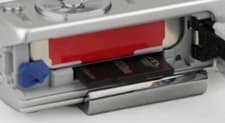
Screen Materials
{{section_header}}{{section.name}}{{/section_header}}
If you need to project onto something other than a dedicated projection screen, there are some limited options, but nothing's foolproof. If it's a blackboard, the {{product.name}} has a dedicated mode just for that. There's also a mode for whiteboard, but it's hard to see why that would be challenging. The real trick is projecting onto a colored surface, like a painted wall. There are no simple color correction features.
Optical Issues
{{section_header}}{{section.name}}{{/section_header}}
The {{product.name}} has a great manual focus that allows for very sensitive adjustments, using buttons on the projector or on the remote. There's also an auto-focus tool that works fairly well. (At least it was better than the auto keystone feature.).
Video Processing
{{section_header}}{{section.name}}{{/section_header}}
There's just one video processing feature on the {{product.name}}. We're not counting basic functions like keystone correction, color, contrast, and the like.
Formats
{{section_header}}{{section.name}}{{/section_header}}
The {{product.name}} has a native resolution of 1200 x 800 (WXGA). It can handle most computer and all NTSC video resolutions, but we noticed some issues with 1080p video.
Calibration
{{section_header}}{{section.name}}{{/section_header}}
We calibrate for color performance, which usually sacrifices brightness. If you need the {{product.name}} for a bright conference room, don't use the calibration settings below. There's a nice, bright "Dynamic" mode made just for the occasion.

Video Modes
{{section_header}}{{section.name}}{{/section_header}}
The {{product.name}} has many video modes, each of which can be tweaked as you like.
Input Ports
{{section_header}}{{section.name}}{{/section_header}}
The {{product.name}} has the ports you need for most situations. There's a VGA for computers and an HDMI or composite video for home theater. The addition of a component video input would have been welcomed, but it doesn't feel like a gaping absence. There's an analog audio input, but no output. If you want to rely on the tinny, mono speaker built into the projector, you're welcome to, but we wouldn't recommend it.
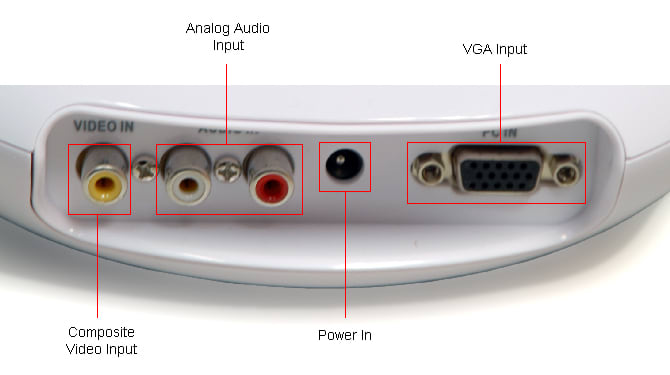
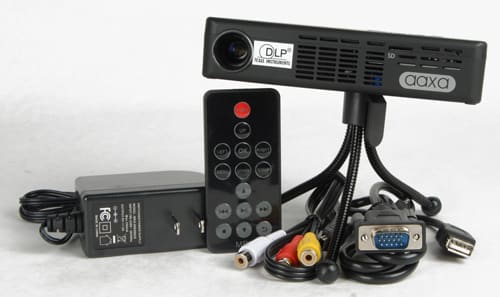
Lots of cables are included
All the ports are listed below.

Other Connections
{{section_header}}{{section.name}}{{/section_header}}
The {{product.name}} has built-in WiFi that allows you to stream wirelessly from a computer. In theory, you simply plug the included USB dongle into your computer and it should recognize the projector as an available display device. Unfortunately, we tried with multiple computers (PCs and Macs) and could not get it to work. The reviews on the internet are positive, so we can only assume that someone, somewhere is enjoying the feature. There are also two USB ports, an "A-type" and a "B-type" that allow you to connect flash drives, etc.
Placement
{{section_header}}{{section.name}}{{/section_header}}
All primary ports are located on the back of the projector. For whatever reason, the "built-in WiFi" is actually a removable dongle located in the front of the projector, under the lock and key of a plastic cover and two tiny screws. Perhaps if it offended you in some way, you could take the time to remove it.
Menus & Manual
{{section_header}}{{section.name}}{{/section_header}}
The {{product.name}}'s onscreen menus are clean and clear. We never had a problem finding what we needed. The instruction manual, available as a CD-ROM or a PDF (downloadable here) is very thorough and easier to search than a paper document.
Noise
{{section_header}}{{section.name}}{{/section_header}}
The {{product.name}} is not the quietest projector we've reviewed. In a room with an ambient noise of 37.9 dB, the noise increased to 50.5 dB when the projector is turned on. However, if you operate the projector in "Eco" mode, which dims the lamp, the exhaust fan can calm down a little.
{{image_chart title="Noise", attachment="Noise Graph"}}
Heat
{{section_header}}{{section.name}}{{/section_header}}
A lot of heat is kicked out from the {{product.name}}, despite its compact size. The intake air measured 76.8 degrees (F) and a whopping 178.2 degrees (F) on the way out. If you reduce the power down to Eco mode, the exhaust cooled to 143.6 degrees (F).
{{image_chart title="Heat", attachment="Heat Graph"}}
Power Consumption
{{section_header}}{{section.name}}{{/section_header}}
The {{product.name}} requires roughly the same amount of power as similarly priced projectors we've reviewed. You can see in the chart below just how much money you can save by putting the projector in Eco mode.
Power Consumption

Value
{{section_header}}{{section.name}}{{/section_header}}
The Optoma HD20 costs $100 more (MSRP) than the {{product.name}}, but its performance is inconsistent. For people who need to make presentations on the go, the {{product.name}}'s excellent brightness is the only real factor worth considering. The other major differences were the Optoma's superior color and throw. Still, home theater enthusiasts who can deal with the Epson's limited connectivity and imperfect color temperature might find it a better value that's better able to stand up to ambient light.
Blacks & Whites
{{section_header}}{{section.name}}{{/section_header}}
The {{product.name}} was significantly brighter than the Optoma HD20. For high visibility under a variety of conditions, pick the Epson.
{{image_chart title="Contrast", attachment="Contrast Graph"}}
Color
{{section_header}}{{section.name}}{{/section_header}}
The {{product.name}} did not perform as well on color as the Optoma HD20. Its RGB curves were nearly as good, but it fell behind in its erratic color temperature output.
Motion
{{section_header}}{{section.name}}{{/section_header}}
Motion was considerably smoother and nearly devoid of artifacts on the {{product.name}}.
Viewing Effects
{{section_header}}{{section.name}}{{/section_header}}
Its performance on various wall types and in producing accurate pixels was on par with the Optoma HD20, but the {{product.name}} was considerably limited in its throw. Overall, the Optoma performed better in the realm of viewing effects.
Connectivity
{{section_header}}{{section.name}}{{/section_header}}
With an additional HDMI port and a component input, the Optoma HD20 has more versatile connectivity than the {{product.name}}.
Value
{{section_header}}{{section.name}}{{/section_header}}
Both of these projectors have the same MSRP, so which is the better buy? Well, if you can make due with the Canon LV-8310's outdated connectivity and its inferior motion, you might be able to find it at a discount.
Blacks & Whites
{{section_header}}{{section.name}}{{/section_header}}
The Canon LV-8310 is a little bit brighter than the {{product.name}}, but it's so close we would call them equal.
{{image_chart title="Contrast", attachment="Contrast Graph"}}
Color
{{section_header}}{{section.name}}{{/section_header}}
The Canon LV-8310 has more consistent color temperature, as well as smoother curves. Pick it over the {{product.name}} for better color performance.
Motion
{{section_header}}{{section.name}}{{/section_header}}
Motion is definitely one of the {{product.name}}'s strong suits, and it performed much better than the Canon LV-8310 in tests. If you plan to watch video on the projector, you may want to go with the Epson.
Viewing Effects
{{section_header}}{{section.name}}{{/section_header}}
Viewing effects basically came down to the more versatile throw distance of the Canon LV-8310. It performed a little better on optical errors, but not as well on varying wall types. Neither of these things is as significant or as relevant as throw.
Connectivity
{{section_header}}{{section.name}}{{/section_header}}
Connectivity on the Canon LV-8310 is a major drawback. Instead of having an HDMI port, it has an outmoded S-video. Eew. It's a bit of a toss-up, though, because it does have a DVI input and a number of audio inputs. However, since you're probably going to be using external speakers for a home theater, and an S-video port may well be useless to you, we would go with the {{product.name}}.
Value
{{section_header}}{{section.name}}{{/section_header}}
As a projector marketed towards home theaters, the Epson 705HD is significantly cheaper than the high-end {{product.name}}. However, we can't claim that the {{product.name}} doesn't have better picture quality, so it may still be a good investment for a home theater with good color and smooth motion.
Blacks & Whites
{{section_header}}{{section.name}}{{/section_header}}
The Epson 705HD is not quite as bright as its fancier brother, the {{product.name}}. Either one could be a viable option for the darkness of a home theater, though.
{{image_chart title="Contrast", attachment="Contrast Graph"}}
Color
{{section_header}}{{section.name}}{{/section_header}}
Both of these Epsons have very similar color temperature error; they spike into blue for brighter shades of grey. However, the {{product.name}} has much smoother color curves. It's the clear champion of color, among these two models.
Motion
{{section_header}}{{section.name}}{{/section_header}}
The {{product.name}} exhibited excellent motion results, while those of the Epson 705HD were merely average.
Viewing Effects
{{section_header}}{{section.name}}{{/section_header}}
The {{product.name}} had some optical issues that weren't prevalent on the Epson 705HD, but its real failing was in a weak throw. The 705HD is likely the better choice, unless you expect to have to project onto strange surfaces most of the time.
Connectivity
{{section_header}}{{section.name}}{{/section_header}}
Connectivity was a little better on the Epson 705HD. The {{product.name}} dropped its largely-vestigial S-video port, but it lacks the audio connections of the 705HD. If you don't have external speakers, the ones on the Epson 705HD could do in a pinch.
Conclusion
The {{product.name}} ($1199 MSRP) is an impressive package, combining great features, portability, and a bright output. We can easily recommend this as the projector you want under your arm as you dash to a presentation or a movie night. It sets up easily, including auto focus and auto keystoning, and has most of the popular ports and plugs for computers and AV devices. The 1.2x zoom increases your flexibility.
Brightness shouldn't be an issue, as the {{product.model}} matches up with best projectors we've reviewed to date. For daytime use, there are certain modes that accentuate brightness at the cost of color accuracy. If you're serious about video quality, be sure to pull the shades down and use the more accurate "Theater" mode. Though the colors didn't quite match up to a cinematographer's standards, the color response was smooth.
Of course, it wasn't a perfect projector. There was a noticeable lack of detail in the shadows, as seen in our greyscale gamma tests. The red channel is significantly darker than than blue and green. While 720p video looked great, we had difficultly seeing fine detail like text in 1080p video. Also, we could not get the wireless streaming connection to work, though the idea of it sounds great.
Overall, the {{product.name}} is clearly a strong model and should definitely have a place on your top picks list when it comes to buying a mid-priced projector.
Meet the tester
David Kender oversees content at Reviewed as the Editor in Chief. He served as managing editor and editor in chief of Reviewed's ancestor, CamcorderInfo.com, helping to grow the company from a tiny staff to one of the most influential online review resources. In his time at Reviewed, David has helped to launch over 100 product categories and written too many articles to count.
Checking our work.
Our team is here to help you buy the best stuff and love what you own. Our writers, editors, and experts obsess over the products we cover to make sure you're confident and satisfied. Have a different opinion about something we recommend? Email us and we'll compare notes.
Shoot us an email